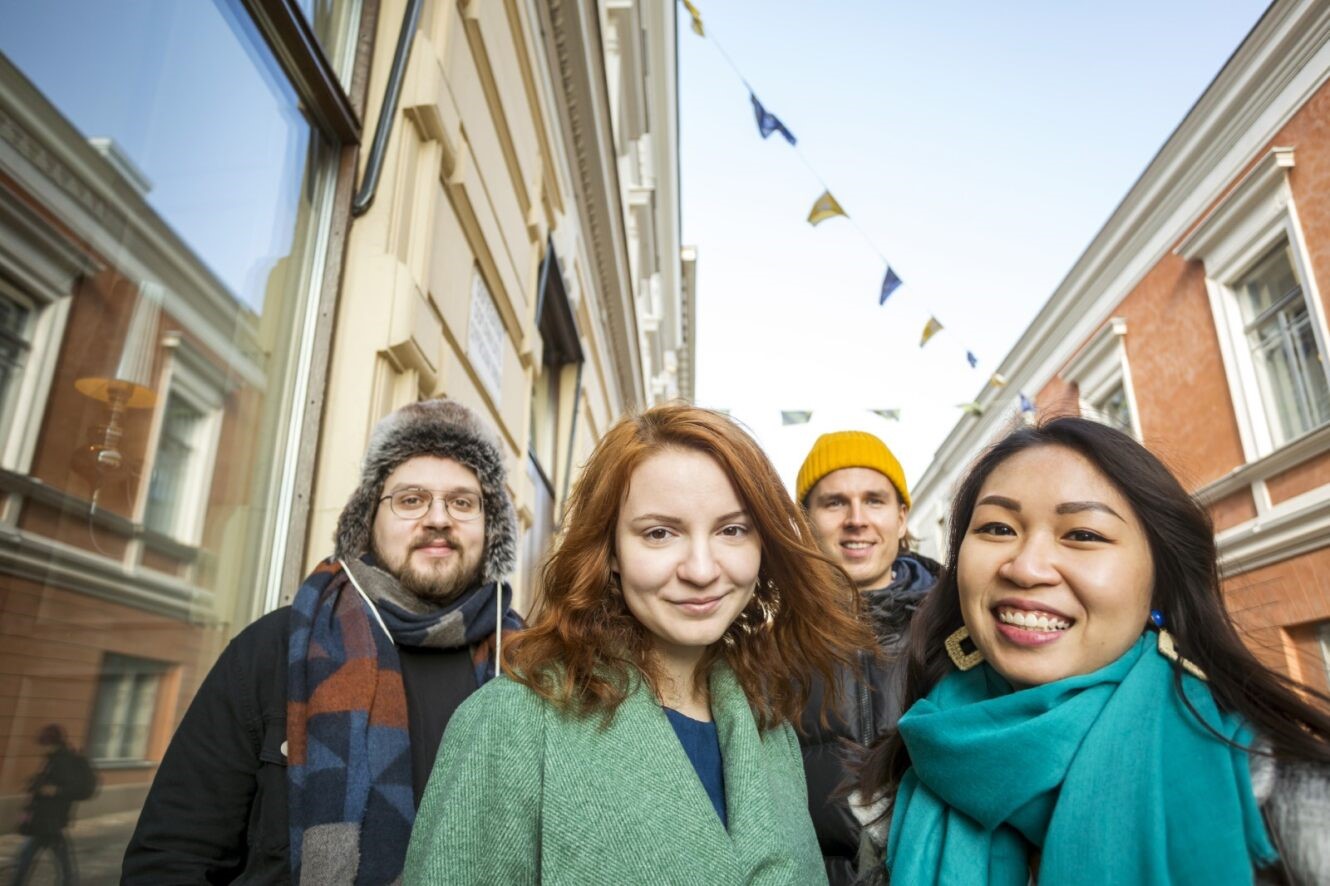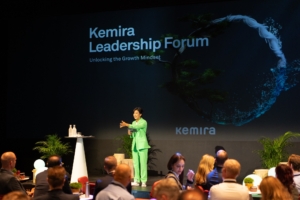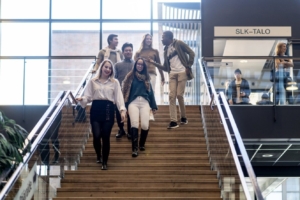Retaining international talent requires actions and a change in attitudes

Organisations in higher education have a crucial role in retaining international talent and helping students with social integration. Katri Salmi, Head of International Relations at Haaga-Helia, and community builder Kamilla Sultanova explain how cultural diversity can become part of the Finnish working life.
Internationalisation is an asset to Finnish companies and organisations. But what is the attitude towards cultural diversity in workplaces really like? A social media campaign that kicked off this autumn challenged everyone in the Finnish working sphere to realise the possibilities cultural diversity holds. Fueled by social media influencers, Muutostöissä highlighted the prejudices non-Finnish speakers face and how a foreign-sounding name can hinder recruitment.
Building a diverse work culture requires effort
Haaga-Helia University of Applied Sciences is one of the organisations part of Muutostöissä campaign. According to Head of International Relations Katri Salmi, the campaign was a great take on bringing the issues to the limelight. However, it is clear the challenges associated with diversity work need to be tackled in real life.
– Our goal at Haaga-Helia is to increase the number of international staff and triple the number of international students in according to the goals set by the previous government, Salmi says.
Being international and an attractive employer is highly important for organisations like Haaga-Helia since the world of science is international, and everyone is competing for the top talents.
– We arrange a lot of staff trainings on diversity and are part of several projects. Currently, there are around 1300 international students at Haaga-Helia and supporting them is a priority for us.
Funded by The Foundation of Finnish Business College Sr, Maahanmuuttajakoordinaattori project is one example of an undertaking aimed at supporting companies looking to become international. The training is intended for experts working with international talent and looking to build diverse work-communities.
– The employment rate of international students graduated from Haaga-Helia is high. We help them create relevant networks and to get to know the Finnish culture, which really helps if you’re a jobseeker, Salmi continues.

Community builder Kamilla Sultanova believes the way we speak to one another, and the example given by leaders are part of successful diversity building. Image: Kamilla Sultanova
Immigration: Finland’s blind spot
Kamilla Sultanova is a community builder, diversity educator and speaker hailing from Uzbekistan. She is familiar with the pain points of Finnish society when it comes to cultural diversity. While studying and working both in Finland and Denmark, Sultanova has found that immigrants experience a variety of challenges while looking for employment.
– Immigration has been a blind spot in Finland for a number of years. Despite groups like the Romani and the Sámi people, Finnish people often lack the experience of working with individuals from different cultural backgrounds, she says.
The Kotamo project (2021-22) examined the state of equality, non-discrimination and diversity among teaching and research staff in Finnish higher education institutions. The main challenges were related to e.g. non-transparent recruitment processes, poorer career development among ethnic minorities (when compared to the majority population), discrimination experienced by these minorities, and a non-inclusive working culture.
– The small labor market and tight-knit circles make it difficult for outsiders to get in, Sultanova states.
Change starts from the grassroots level, but political decision-making also has concrete implications for immigrants looking to find employment.
– The current immigration politics paints a worrying image for people with foreign background. Both higher education institutions and companies already have challenges retaining foreign workforce in Finland, Sultanova points out.

At Haaga-Helia, international students are connected with companies to help build networks already during studies. Image: Haaga-Helia University of Applied Sciences
Lasting change stems from the community
Although the importance of internationalisation is widely recognised within companies and organisations, concrete actions might still be lacking. Where to start if you’ve only in the beginning of diversity work?
– Leading diversity requires consistency and commitment. One advice would be to measure your goals: numbers often lead to concrete actions. But even the best strategies can fail if the people aren’t invested. That’s why lasting change stems from the work community.
A couple of years back Sultanova was part of Hanken HIT, a project by Hanken School of Economics. The ongoing project strives to support international students and build networks with companies through mentorship. 85 percent of students who have gone through the program have got employment, and over 90 percent have decided to stay in Finland.
– There has been a lot of progress when it comes to supporting and attracting international students to Finland. Hanken HIT is a great example of this type of initiative, Sultanova says.
If we want more foreign workforce to come to Finland, cultural norms and structures still require an upgrade. According to Sultanova, fear of the other and racism are still present in Finnish society. Salmi agrees:
– Recent studies show that Finland is the most racist country in Europe. Integration causes stress, which the current political atmosphere isn’t helping. Nevertheless, I trust that we at Haaga-Helia will be able to continue supporting our international students and staff going forward, Salmi says.
– We should open our hearts instead of closing them. I believe in the Nordic values, and I want to preserve them. The Finnish welfare state can be saved by including everybody in this work, Sultanova concludes.
Main image: Haaga-Helia University of Applied Sciences
